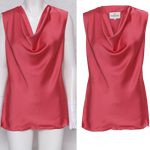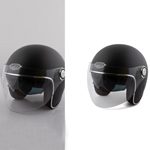The photographic texture is a major component of the design. So it is vital to learn how you can turn photographic textures into masks using Photoshop.
It will greatly help to boost your skills and enhance your creativity.
Today I am going to tell you about an overly brisk and simple approach to take photographic textures and transform them into masks.
Whether you are a beginner or advanced level user, you should learn this strategy and start utilizing it on your projects.
Table of Contents
Understanding Photographic Textures
Imagine you’re looking at a photo of a beach. Can you almost feel the sand between your toes? That’s because of textures!
Photographic textures are like the special ingredients that make a picture feel real.
They’re all the different surfaces and materials you can see in a photo, like the roughness of tree bark or the smoothness of a shiny car.
Think about the things you touch every day – wood, metal, fabric, even water! Each texture adds its own flavor to a picture, making it more interesting and fun to look at.
You can find textures everywhere! In nature, at home, or even at the park. Just take a closer look, and you’ll discover a whole world of textures waiting to be captured.
So, next time you’re snapping pictures with your camera, keep an eye out for those amazing textures. They’re like little treasures that can make your photos come to life with magic!
Steps of Turning Photographic textures into masks
You can do everything in Photoshop in different ways. You should not always try one approach to accomplish something.
You can find various methods of working, so that you can arrive at a point where you immediately know which technique is best.
Step: 1
A channel is fundamentally the same as in nature and also utilizes grayscale values.
The amazing part here is that one can transform a channel into a selection. That can obviously turn into a mask just in a single click.
Step: 2
In the next step, duplicate the channel. You can do it by hauling the channel to the little page-looking button, which is close to the base of the Channels palette (simply like duplicating a layer).
Step: 3
Select the new channel that you just made. Then play out a levels change that will crank the contrast.
Now adjust the contrast ratio depending on the impact that you’re going to use.
Step: 4
Since you have a great contrast ratio. So it’s an ideal opportunity to transform the channel into a selection.
This is truly simple: just command-click (Control on a PC) on the channel, Then it will bring up a live selection.
Step: 5
As we have an active selection now, you definitely know how to turn that into a mask.
We should simply choose our content layer. Then, click the little mask button which is at the bottom of the Layers panel.
Try not to stop there! Use various textures, toss in some layer effects, then you will see some more wonderful results.
This is how you can turn Photographic textures into masks using Photoshop.










